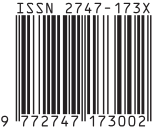Study of the Ferromagnetic Magnetite Resonance (Fe3O4) Forms of Thin Films Using Micromagnetic Simulation
DOI:
https://doi.org/10.19184/cerimre.v3i1.26414Abstract
Fe3O4 is the strongest magnet among other iron oxides. Magnetite Fe3O4 is applied as a permanent magnet. The hysteresis curve of the permanent magnet Fe3O4 has a coercivity field that is not too large so that the material has a good chance to be applied as an absorbent material for RADAR waves. Micromagnetic simulations were carried out on Fe3O4 material in the form of thin film against hysteresis curves and ferromagnetic resonances at various thickness variations and side length variations, and the relationship was seen with changes in the bandwidth of the radar wave absorption frequency if the thickness variation of the simulated material had the same multiple as the experimental material. The thickness variations in this study were 60 nm, 90 nm, and 120 nm, where the variations in the experiment were 0.6 mm, 0.9 mm, and 1.2 mm. Micromagnetic simulation runs were performed to obtain the hysteresis curve and resonance frequency of the Fe3O4 material. The simulation results show that the resonant frequency increases with increasing thickness (fixed side length). Meanwhile, the relationship between the resonant frequency and the side length of the thin film is inversely related. Changes in the resonant frequency of Fe3O4 material are closely related to changes in the absorption frequency band of Fe3O4 material. The hysteresis curve obtained shows that the Fe3O4 material is a hard magnetic material. Changes in the resonant frequency of Fe3O4 material are closely related to changes in the absorption frequency band of Fe3O4 material. The hysteresis curve obtained shows that the Fe3O4 material is a hard magnetic material. Changes in the resonant frequency of Fe3O4 material are closely related to changes in the absorption frequency band of Fe3O4 material. The hysteresis curve obtained shows that the Fe3O4 material is a hard magnetic material.









